

Inquiry
Avian Bioscience Research Center
Nagoya Univ. Graduate School of Bioagricultural Sciences
| Chicken strains and lines | Quail lines |
| Ancestral speciesInbred strainsLong-term closed coloniesClosed colonies Disease modelsDeveloping coloniesTransgenic chickens Primordial germ cell lines | Long-term closed coloniesTransgenic quails |
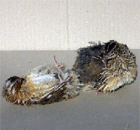
| Origin | ||||
| Introduced from Nippon Institute for Biological Science (2010) | ||||
| Characteristics | ||||
|
||||
| This line was established as a mutant line developing myotonic dystrophy with main symptoms of inability to elevate the wing, from the backcrosses of 6 generations from the RW line to the WE line. The myotonic dystrophy is controlled by an autosomal dominant gene that thought to be homozygous lethal and homozygous birds will die just before hatching. All birds develop symptoms before age 6 weeks. Morphological abnormalities of the muscle are found in the surface layer of pectoralis muscle mainly. |
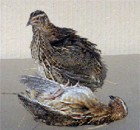
| Origin | ||||
| Introduced from Nippon Institute for Biological Science (2010) | ||||
| Characteristics | ||||
|
||||
| This line is a closed colony developing type II glycogenosis originated from mating a normal female of the PWE line (Panda plumage and white egg) and a male of the PNN line developed type II glycogenosis in 1976. The main symptom is the inability to elevate the wing only and deposition of glycogen is seen in liver, heart and muscle already at 3 weeks old. The inability to elevate the wing is developed at 3 weeks old. This character is controlled by an autosomal recessive gene. |
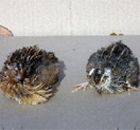
| Origin | ||||
| Introduced from Nippon Institute for Biological Science (2010) | ||||
| Characteristics | ||||
|
||||
| This is a mutant line lacking the nerve neurofilament with main symptoms of tremor of the whole body after hatching, found out in the WE line and maintained as a closed colony. This character of lacking the neurofilament is controlled by an autosomal recessive gene and is known to be caused by non-sense mutation in the NF-L gene. |
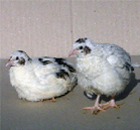
| Origin | ||||
| Introduced from Nippon Institute for Biological Science (2010) | ||||
| Characteristics | ||||
|
||||
| This line has Panda plumage (wild type with white spots) and laying colored eggs. Newborn chicks are yellow of whole body like chicken chicks. The causal gene of Panda plumage was known to be endothelin receptor B2 (EDNRB2). |
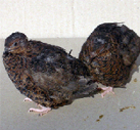
| Origin | ||||
| Introduced from Nippon Institute for Biological Science (2010) | ||||
| Characteristics | ||||
|
||||
| This is a developing inbred line with recessive black plumage and laying colored eggs introduced from Takeda Pharmaceutical Co. Ltd. to Nippon Institute for Biological Science in 1983. The recessive black plumage is caused by mutation of the agouti signaling protein (ASIP) gene. |
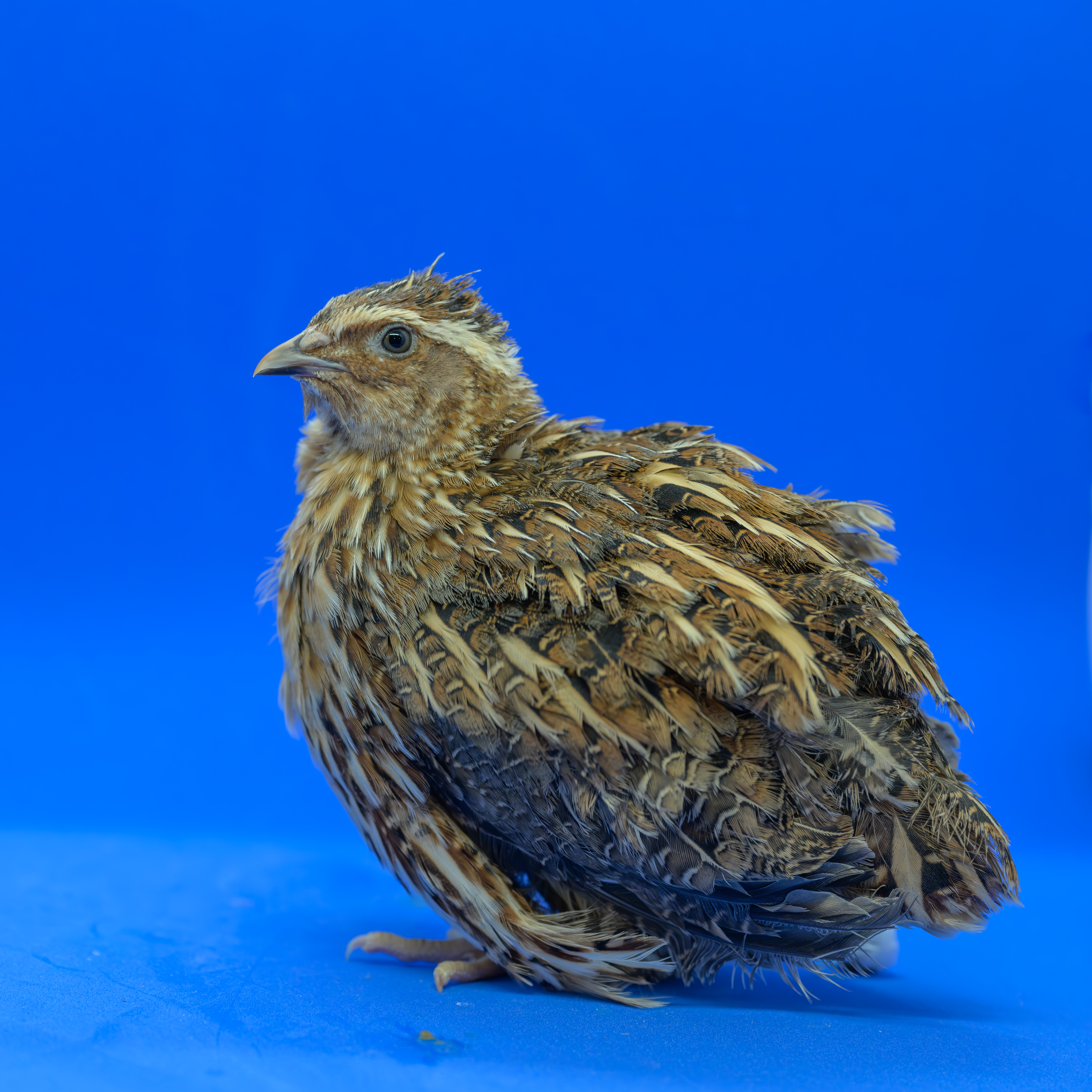
| Origin | ||||
| Established at Nippon Institute for Biological Science in 1971 and introduced in 2012 | ||||
| Characteristics | ||||
|
||||
| This is a closed colony fixed a character of laying white eggs which emerged by mutation from a closed colony maintained since 1969. Types of isozymes in serum, blood cells and various organs were examined. Linkage relationship is not seen between the traits of laying white eggs and Panda plumage. It is used for production of Marek's disease vaccine, the toxicity test of various chemicals such as pesticides, OECD and U.S. EPA avian toxicity test method. |
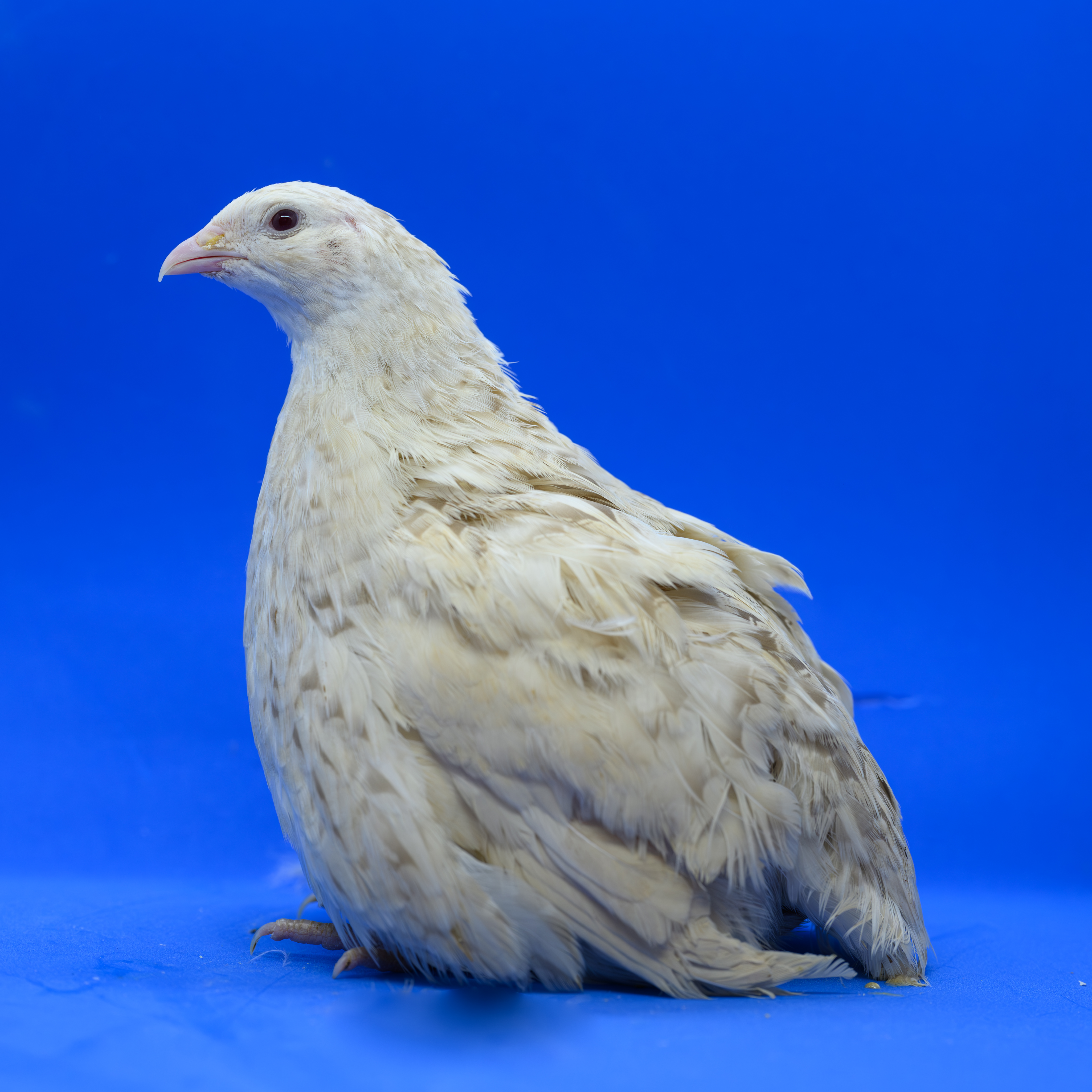
| Origin | ||||
| It was established at Nippon Institute for Biological Science in 1975 from birds introduced from University of California which have incomplete albino (ghost feathers are appeared to dorsal) controlled by a sex linked recessive gene and laying white eggs. Introduced in 2012 | ||||
| Characteristics | ||||
|
||||
| This is a closed colony consisting of 12 males and 24-36 females. The whole body is white because of albino, but pale colored (ghost) feathers are appeared on the back side. The genes of albino and cinnamon plumage are multiple alleles and albino is recessive. Sexing is possible in the neonatal chick by the mating of AWE♂ × WE♀. |
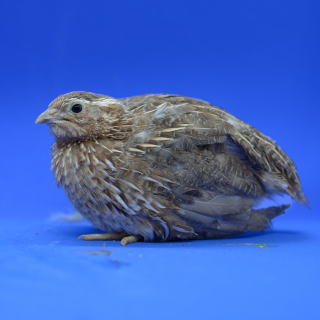
| Origin | ||||
| Introduced from the National Institute for Environmental Studies (NIES) (2013) | ||||
| Characteristics | ||||
|
||||
| This line has been maintained as a closed colony for more than 60 generations at the National Institute for Environmental Studies (NIES). Individuals of this line underwent selection for low antibody production against an inactivated Newcastle disease virus antigen at Tohoku University and then were introduced into the NIES in 1980. The MHC haplotype is fixed in homozygous condition. The draft genome assembly of Japanese quail was constructed using this line (Kawahara-Miki et al., Genomics 101:345-353, 2013). |
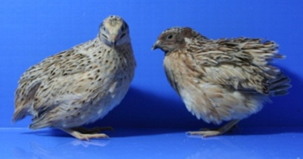
| Origin | ||||
| Introduced from the National Institute for Environmental Studies (NIES) (2013) | ||||
| Characteristics | ||||
|
||||
| This line was originated from a meat-type quail line that was imported from France and introduced into the NIES in 1992. This line was established through selective breeding under genetic and microbiological control. | ||||
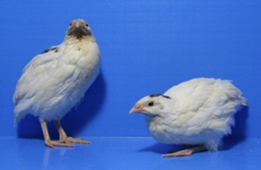
| Origin | ||||
| Introduced from the National Institute for Environmental Studies (NIES) (2013) | ||||
| Characteristics | ||||
|
||||
| This line was originated from a meat-type quail line that was imported from Hungary and introduced into the NIES in 1992. The body weight of this line is about twice as the wild-type Japanese quail, so it can be a model for QTL study of the growth rate and body weight of Japanese quail. Because the white plumage of this line is easily distinguishable from the wild-type plumage, this line is useful as either of a donor or a recipient for producing transplantation chimera. |
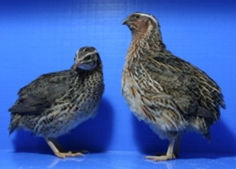
| Origin | ||||
| Introduced from the National Institute for Environmental Studies (NIES) (2013) | ||||
| Characteristics | ||||
|
||||
| This line was originated from a meat-type quail line that was imported from Brazil and introduced into the NIES in 1992. This line is about twice larger than the wild-type Japanese quail, so it is a useful model for detecting QTLs of the growth rate and body weight of Japanese quail. This line has a brown plumage that is controlled by a sex-linked recessive gene. |
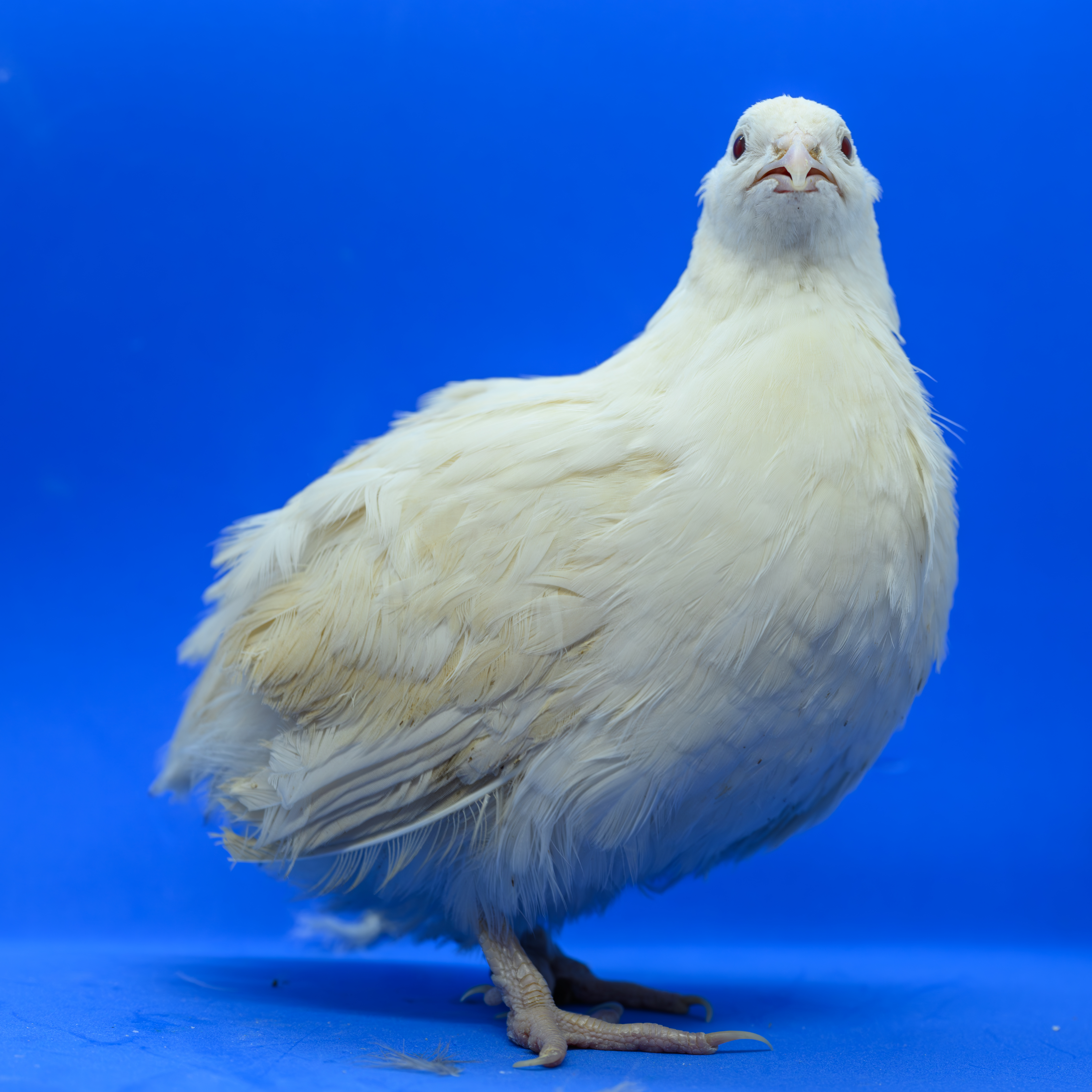
| Origin | ||||
| Introduced from Shinshu University (2015) | ||||
| Characteristics | ||||
|
||||
| This line was derived from a meat-type with incomplete albinism that is controlled by a sex-linked recessive gene. The plumage is white through the eitire body, however, ghost barring appears on the back. Because this line shows the sex-linked recessive albinism, sex-sorting of chicks can be easily done at an early stage by mating males of this line with females that have a wild plumage. |
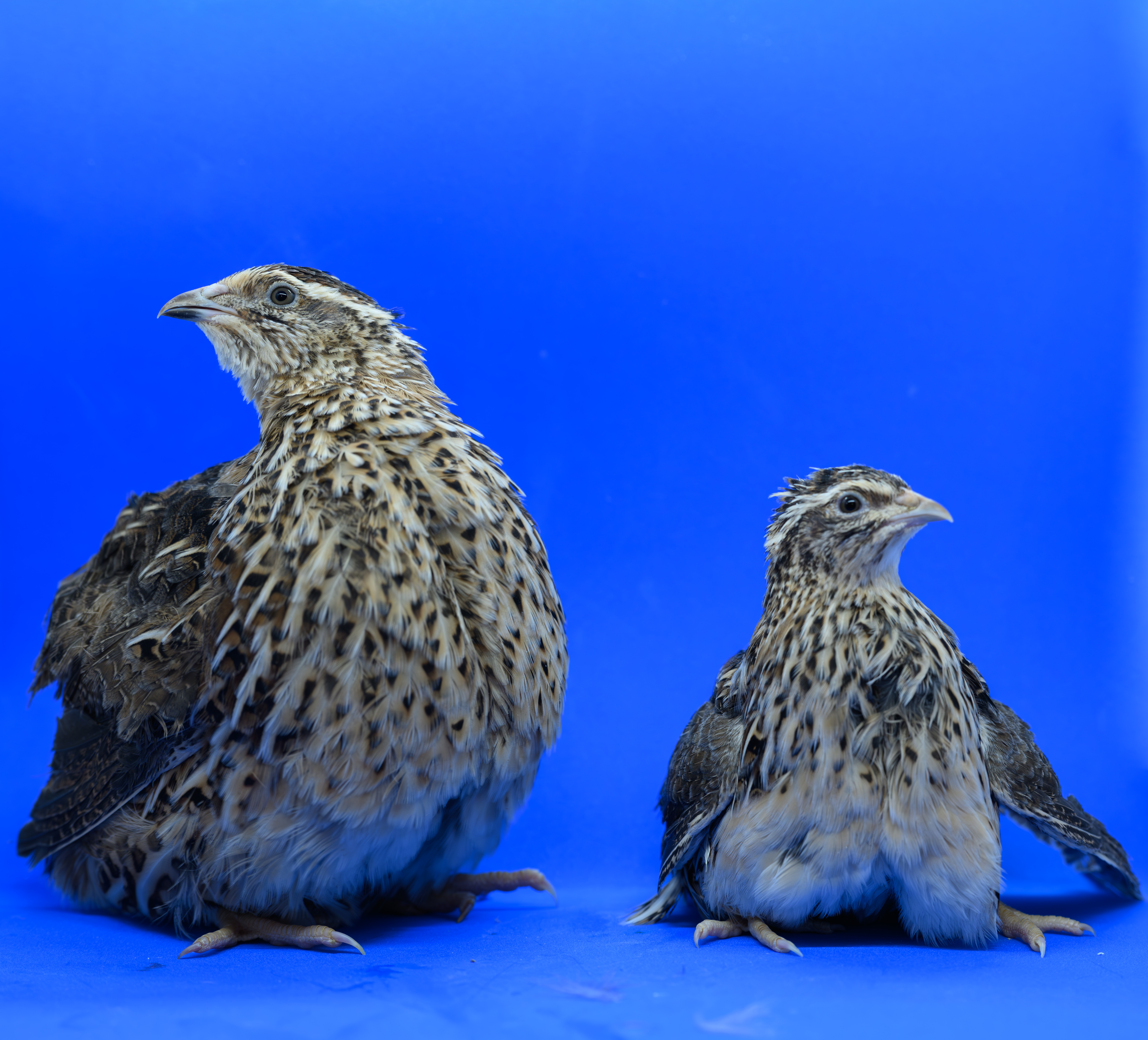
| Origin | ||||
| Introduced from Kyushu University (2016). | ||||
| Characteristics | ||||
|
||||
| The quail line with wild-type plumage color, which had been bred for meat production. Adult quail weigh 205–350 g, which is about twice the size of standard individuals (left side of photo). WJ is an outbred line originated from F1 hybrids between a Jumbo quail line maintained in Shinshu University and a commercial quail line. |
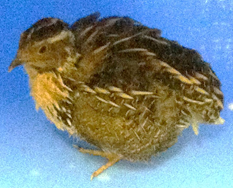
| Origin | ||||
| Introduced from Hiroshima University (2013). | ||||
| Characteristics | ||||
|
||||
| This mutant line shows hereditary multiple malformation (HMM). A breeding experiment suggests that the trait is inherited in an autosomal recessive manner (Tsuzuki et al., 1998). The majority of homozygotes of the mutant gene die at the sixth day of incubation. Some of the homozygotes can survive up to 15 days of incubation, but they have greatly shortened lower and upper beaks and show serious growth retardation. Furthermore, they show syndactylus polydactyly in both fore and hind limbs. In the abdomen of the homozygote, a part of the ventriculus, liver, and small intestine protrudes out of the umbilicus region. In the skeleton of the late HMM embryos, ossification is generally delayed and morphogenetic abnormalities are observed all over the body. (see Tsudzuki et al., J. Hered. 89:24-31, 1998). |

| Origin | ||||
| Introduced from Hiroshima University (2014) | ||||
| Characteristics | ||||
|
||||
| This line has a plumage color mutation, yellow, which is caused by a simple autosomal dominant gene (Y) that is lethal at an early embryonic stage, probably before the second day of incubation, in the homozygote. The yellow chick shows yellow down with black stripes on the back. |

| Origin | ||||
| Introduced from Hiroshima University (2014) | ||||
| Characteristics | ||||
|
||||
| This line has an autosomal incomplete dominant plumage color mutation. Both sexes of this mutant exhibit blackish (or dark brownish) plumage over the entire body. The phenotype and mode of inheritance of this dominant black mutant (D) are similar to those of the extended brown mutant (E). Thus, this mutant is considered to be the same as extended brown. |
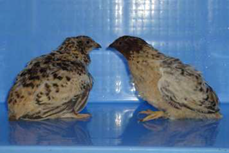
| Origin | ||||
| Introduced from Hiroshima University (2014) | ||||
| Characteristics | ||||
|
||||
| The pansy mutant is controlled by a recessive allele (dps) at the black (D) locus. The pansy chick shows light yellow down with 3 black stripes on the back and brownish down on the head. Adult plumage is fundamentally divided into three colors, rust, black and white. The chin and throat of females is white with faint rust color; in contrast, the face of males is brown or heavy rust; and the chin and throat is also brown or heavy rust. |
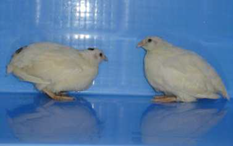
| Origin | ||||
| Introduced from Hiroshima University (2014) | ||||
| Characteristics | ||||
|
||||
| The mutant chick has creamy yellow plumules with a brown spot on the head and/or back, which is controlled by an autosomal recessive gene discovered in 1982. The creamy yellow and brown plumules are replaced by white and dark feathers, respectively, along with the mature. The dotted white mutant is considered to the bottom recessive allele (sdw) at the panda (s) locus. |
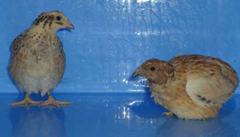
| Origin | ||||
| Introduced from Hiroshima University (2014) | ||||
| Characteristics | ||||
|
||||
| The fawn-2 is an autosomal incompletely dominant mutation that occurred at the yellow (Y) locus. Sex differences are large in adult plumage of both the homozygote and heterozygote. The homozygous male shows whitish light-brown plumage with a few small black speckles on the back, while the homozygous female shows more creamy plumage than the male and has a relatively large number of black speckles on the back. In the heterozygote, the primary plumage pattern is basically the same as that of the homozygote, but the brown color is deeper in the heterozygote than in the homozygote in both sexes. The phenotype and mode of inheritance of the fawn-2 mutant are similar to those of the fawn mutant and beige mutant. Thus, there is a possibility that these three (fawn, fawn-2, and beige) are identical mutants, or alleles at the same yellow locus. |
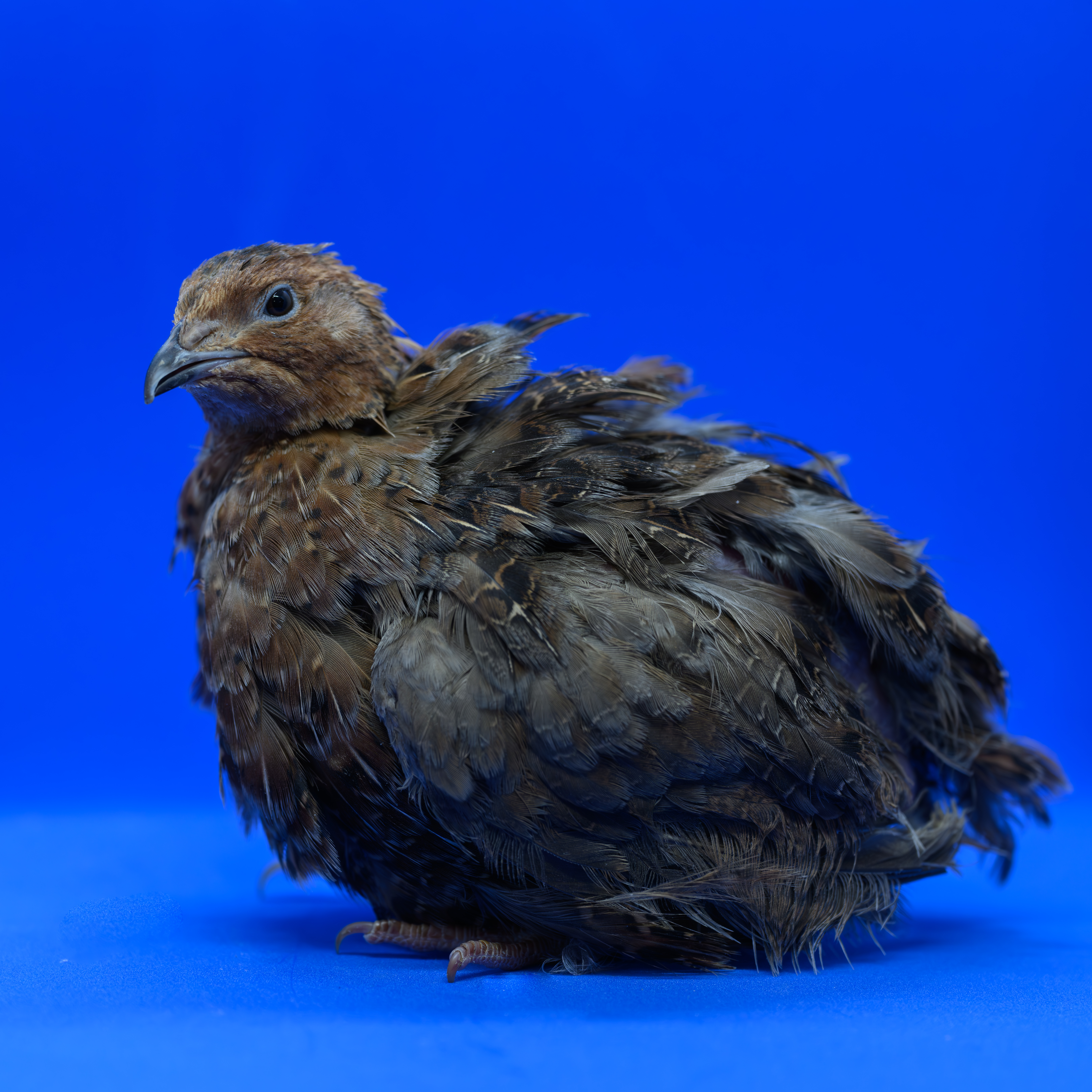
| Origin | ||||
| Introduced from Shinshu University (2014) | ||||
| Characteristics | ||||
|
||||
| This line has black plumage caused by an autosomal incompletely dominant black (D) mutation and lays white eggs (we). The neonatal plumage of the homozygote shows a blackish (or dark brownish) color over the entire body. In the chicks heterozygous for this mutation, blackish color is lighter than that of the homozygote. |
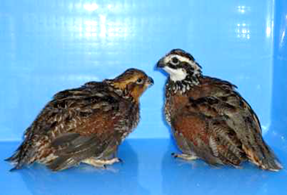
| Origin | ||||
| Introduced from Shinshu University (2014) | ||||
| Characteristics | ||||
|
||||
| Colinus virginianus (Bobwhite quail) belongs to the family Odontophoridae and taxonomically different from Coturnix japonica (Japanese quail) which belongs to another avian family Phasianidae. While Japanese quail is a member of the Old world quail which distributed in the Palaearctic region (Europe, North Africa, and Asia), Bobwhite quail is a member of the New world quail which live in North and South America. This species is expected to become an experimental animal for comparative genomic, developmental or cytogenetic studies of Chicken and Japanese quail. |
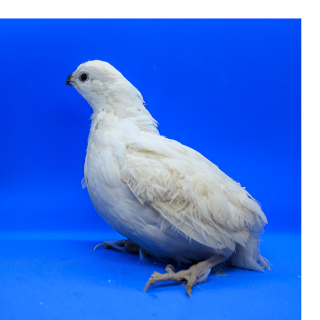
| Origin | ||||
| Introduced from Shinshu University (2014) | ||||
| Characteristics | ||||
|
||||
| Colinus virginianus (Bobwhite quail) belongs to the family Odontophoridae and taxonomically different from Coturnix japonica (Japanese quail) which belongs to another avian family Phasianidae. While Japanese quail is a member of the Old world quail which distributed in the Palaearctic region (Europe, North Africa, and Asia), Bobwhite quail is a member of the New world quail which live in North and South America. This species is expected to become an experimental animal for comparative genomic, developmental or cytogenetic studies of Chicken and Japanese quail. |